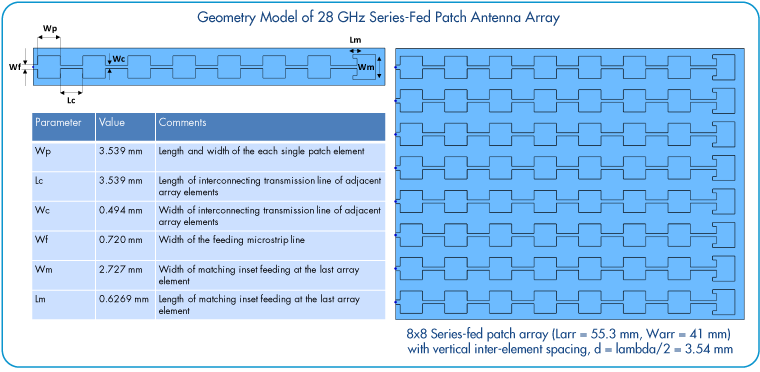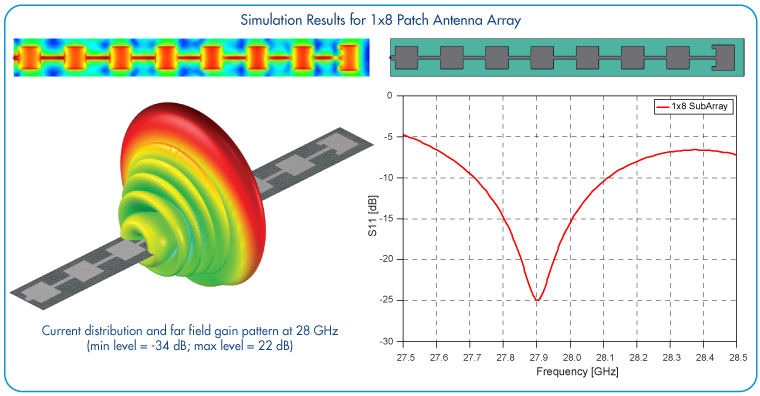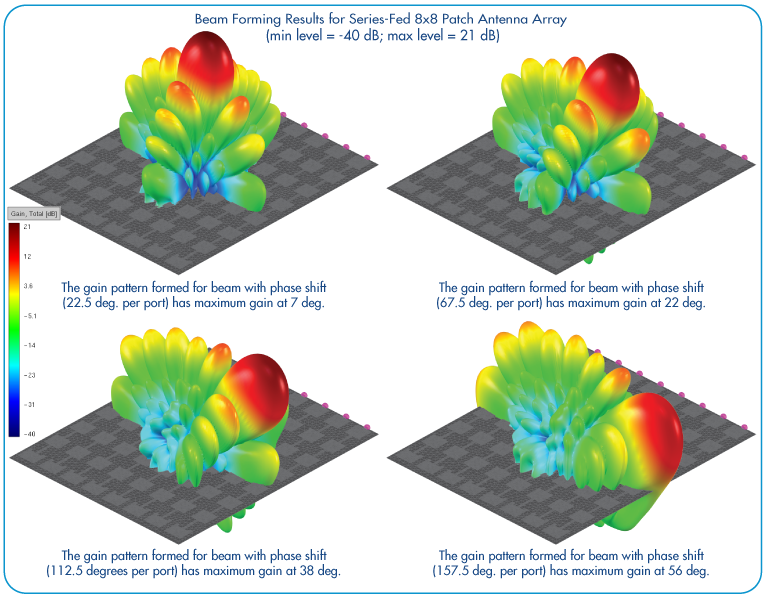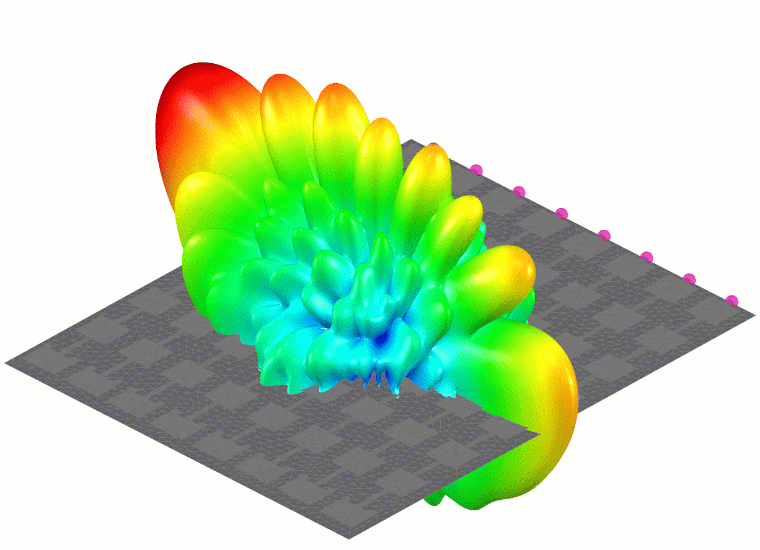Simulation of 28 GHz Series-Fed Patch Antenna Array for 5G Applications
Introduction
5G, the fifth generation wireless technology, is focusing on modern antenna technologies like massive MIMO (multi-input and multi-output), phased arrays and mm-wave band to obtain data rates up to 10 Gbps. Frequencies are above 24 GHz reaching up to 72 GHz.
This application note demonstrates modeling and 3D full wave simulations of 64 elements, 8×8 phased series-fed patch antenna array for 28 GHz, mm-wave band 5G mobile base station antennas. The phased array steers its beam along the horizontal axis to provide the coverage in different directions. The array contains 8 rows of 8-element series fed arrays. The initial geometry of the antenna model was automatically constructed in EMCoS CAD Engine using scripting language and exported to ACIS SAT file for modeling and simulations in EMCoS Studio environment. The antenna geometry and design parameters are shown below:

Simulation Results for Single 1×8 Patch Sub Array
The antenna is printed on substrate with dielectric constant of 2.33, loss tangent of 0.0012 and thickness of 0.254 mm (based on characteristics of RT/duroid ® 5870 material from Rogers Corporation). The reflection coefficient, surface current distribution and 3D far field gain pattern (with maximum gain level 22 dB at 28 GHz) are shown below for single 1×8 patch antenna sub array:

Simulation Model and Results for Series-Fed 8×8 Patch Antenna Array
Depending on the phasing of the input signals at each port different beams can be formed. The phase shift is applied across the input ports that are fed by voltage sources, so the 1st source will have a shift of 0 deg., the 2nd -22.5 deg., the 3rd -45 deg., etc. for the case of the first beam.

The gain patterns formed for beam with each phase shift are presented on the picture below. The eight beam steering angles obtained through simulation are: ±7 deg., ±22 deg., ±38 deg., ±56 deg.:


References
- M. K. Ishfaq, T. A. Rahman, Y. Yamada, and K. Sakakibara, “8×8 Phased Series Fed Patch Antenna Array at 28 GHz for 5G Mobile Base Station Antennas,” 2017 IEEE-APS Topical Conference on Antennas and Propagation in Wireless Communications (APWC), pp. 160-162, 2017. (https://ieeexplore.ieee.org/document/8062268)
- https://rogerscorp.com/-/media/project/rogerscorp/documents/advanced-connectivity-solutions/english/data-sheets/rt-duroid-5870— 5880-data-sheet.pdf

